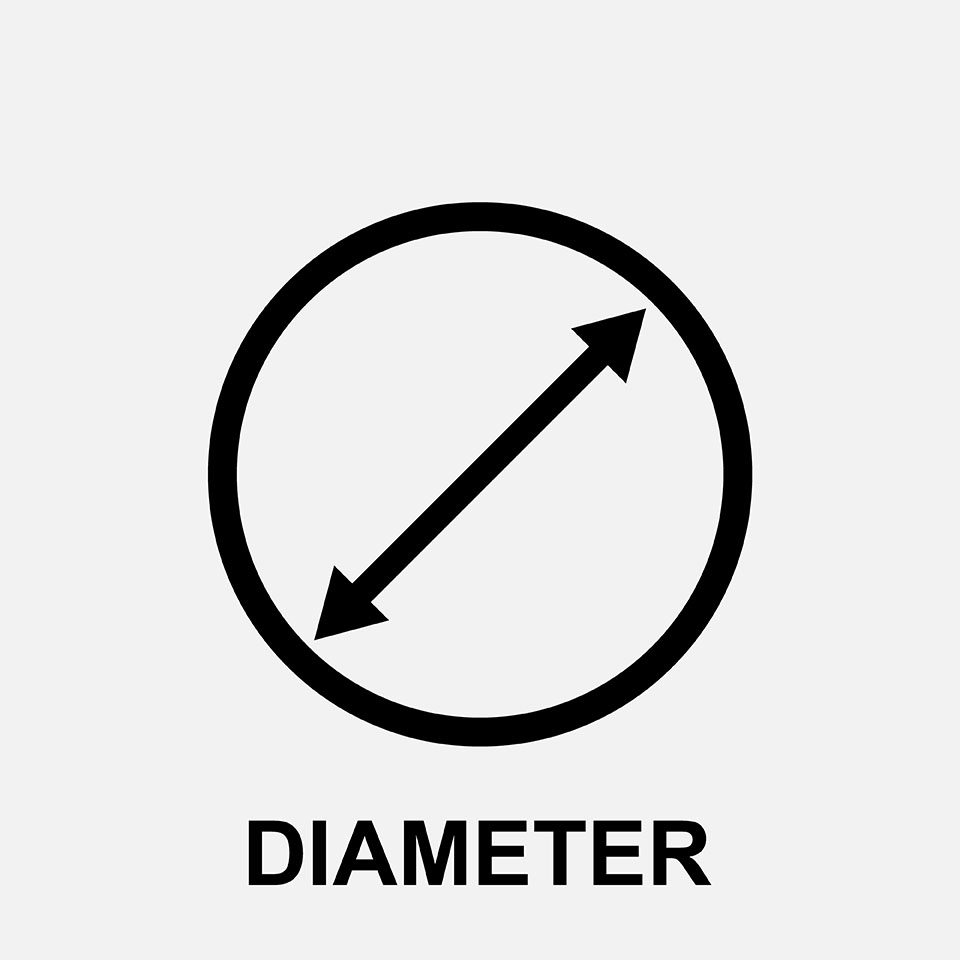

The diameter is the distance across a circle, passing through the centre. It is the longest line that can be drawn in a circle. The diameter of a circle is equal to twice the radius of the circle.
The diameter of a circle can be measured using a ruler or a compass. To measure the diameter of a circle using a ruler, place the ruler across the circle so that it passes through the centre. Then, read the measurement at the points where the ruler touches the edge of the circle.
To measure the diameter of a circle using a compass, place the point of the compass in the centre of the circle and draw a line that passes through the edge of the circle. Then, measure the length of the line using a ruler.
The diameter of a circle is an important measurement in geometry and in many other fields, such as engineering and architecture.
The diameter of a sphere is the distance across the sphere, passing through the centre.

Noun: diameter.
Adjective: diametrical.
Adverb: diametrically.
Synonym: breadth.
Antonym: radius.
The word "diameter" comes from the Greek word diametros, which means "across" or "through the middle". It was first used in English in the 14th century to refer to the distance across a circle.
What is the diameter of a circle?
Question:
Explain the concept of diameter and its significance in the study of circles and spheres. Provide examples of how the diameter is used to calculate other geometric properties.
Answer:
The diameter is a fundamental concept in geometry, especially when studying circles and spheres. It refers to the straight line segment passing through the center of a circle or sphere, connecting two points on its circumference. The diameter is significant because it determines the size and proportions of these two-dimensional and three-dimensional shapes.
In a circle, the diameter is precisely twice the length of the radius (d = 2r). It is used to calculate the circumference using the formula C = πd, where π (pi) is a constant approximately equal to 3.14. Additionally, the area of a circle can be found using A = πr², where r is the radius. Similarly, in a sphere, the diameter is twice the length of the radius (d = 2r), and the surface area is determined by A = 4πr², while the volume is calculated using V = (4/3)πr³. Understanding the diameter is essential in solving various geometric problems and practical applications involving circles and spheres.